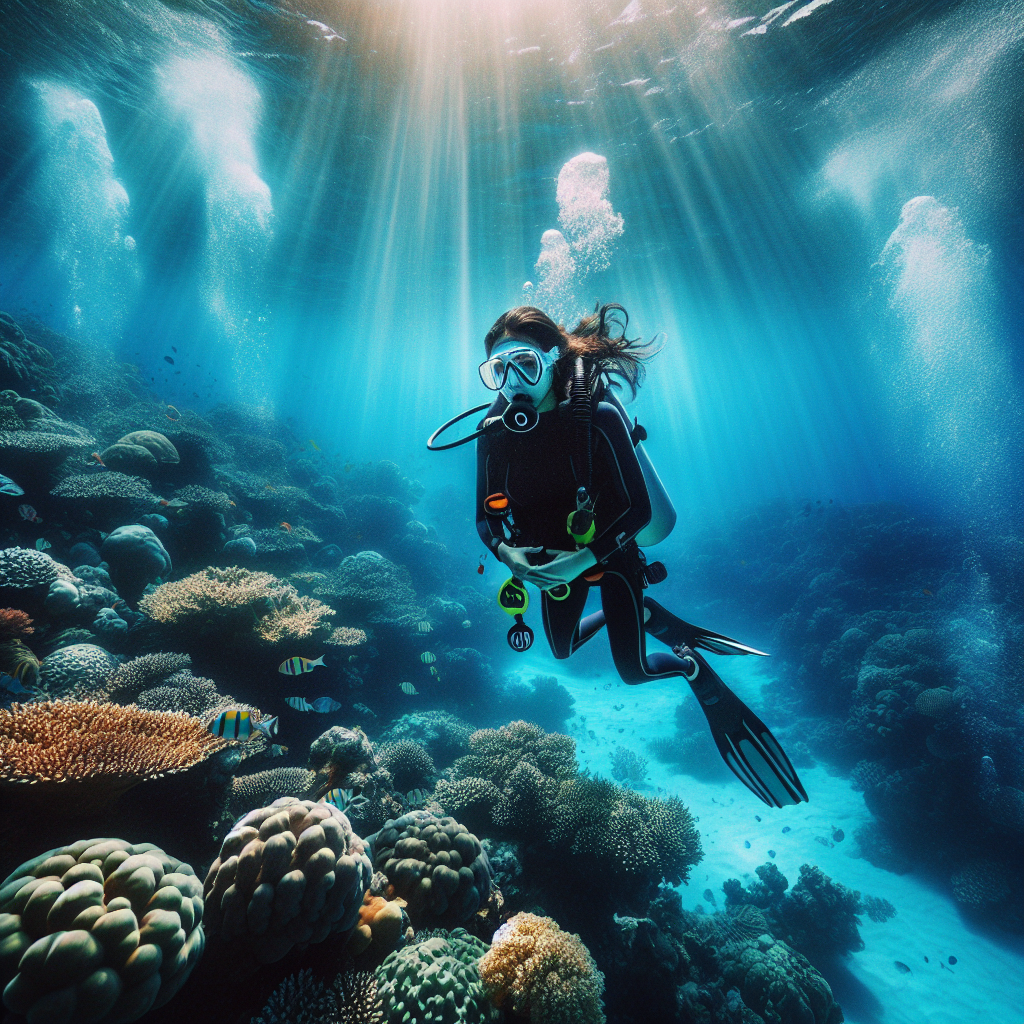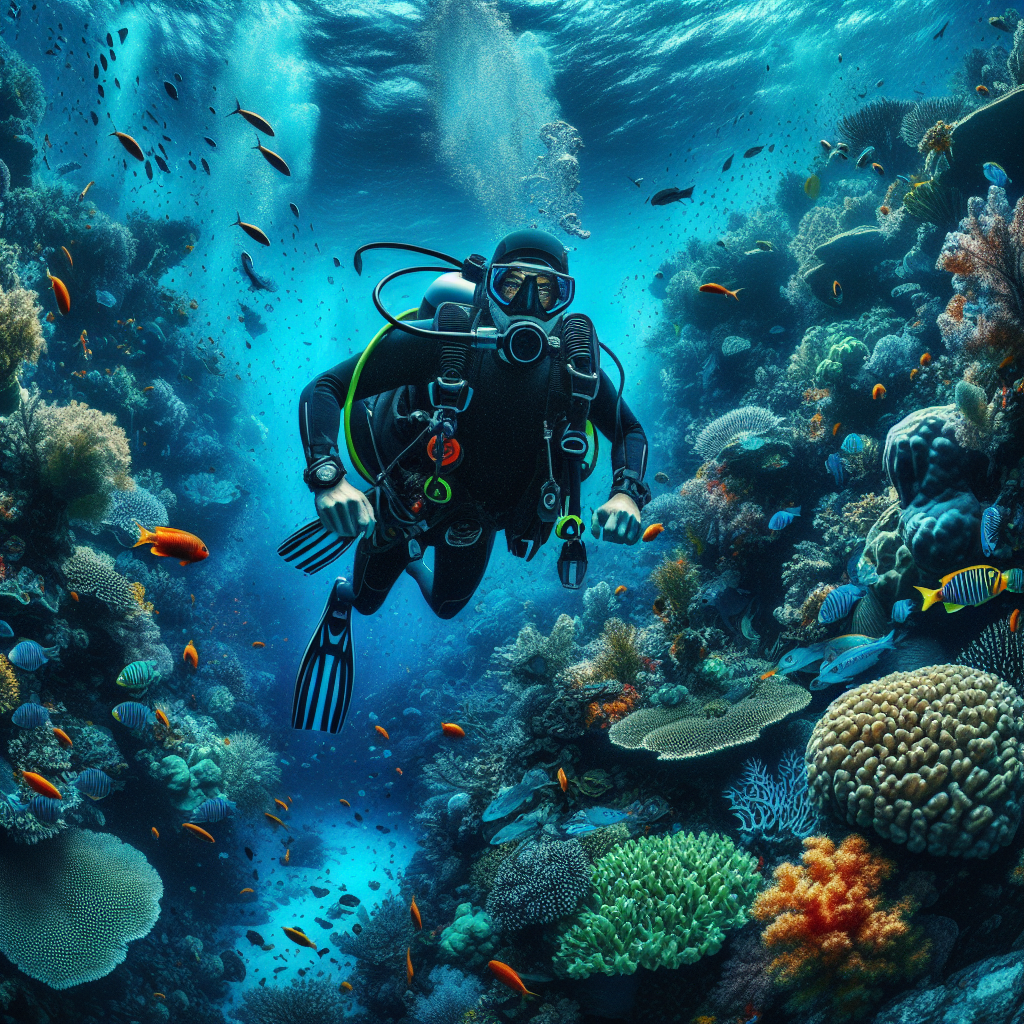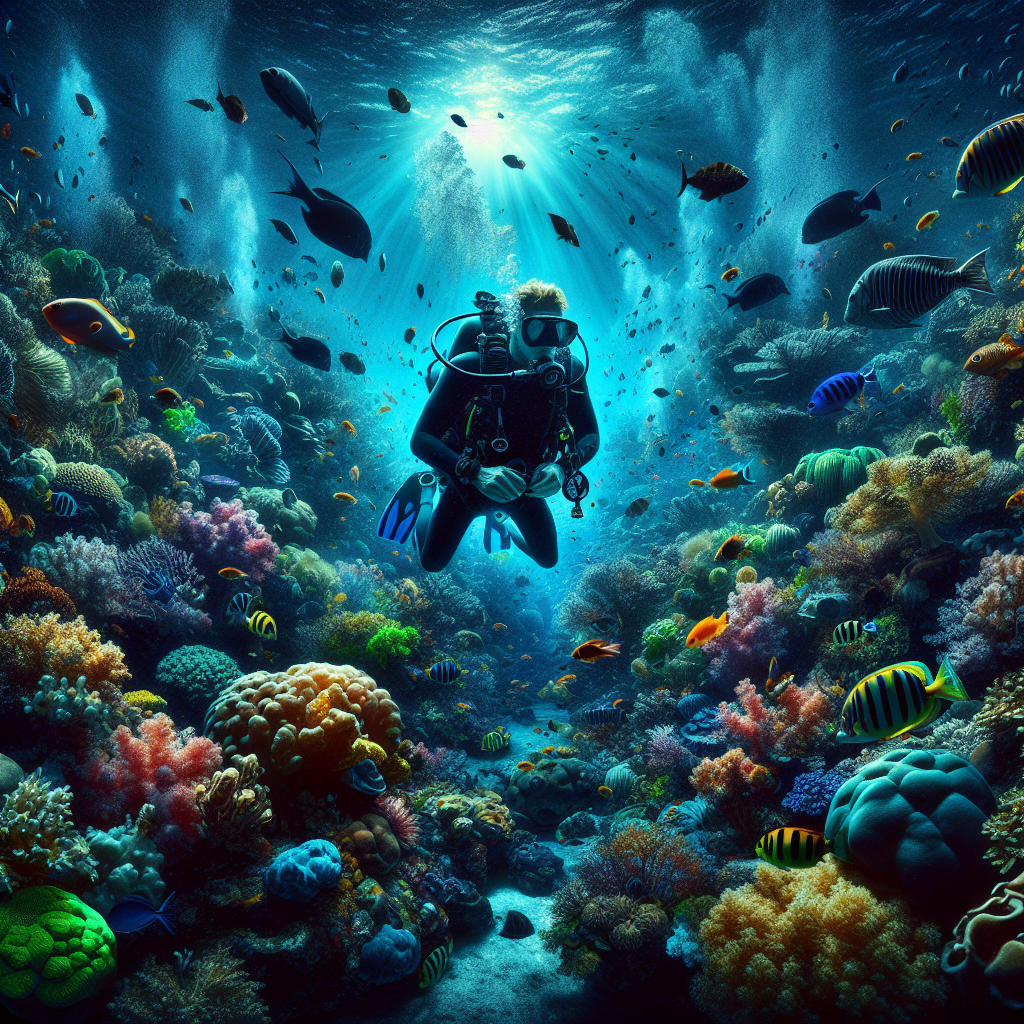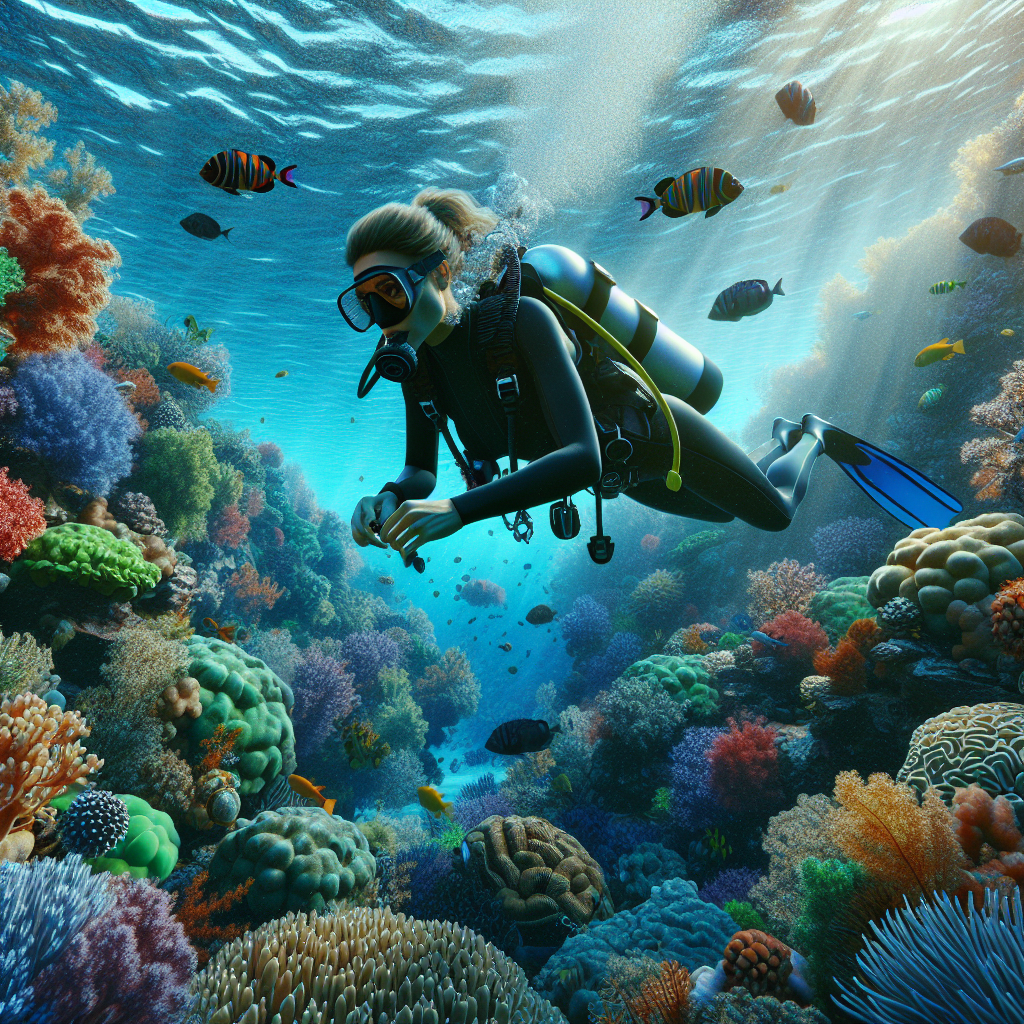Scuba Diving Trips: Dive Into Your Next Adventure!
Have you ever dreamed of exploring the underwater world, swimming alongside vibrant marine life, and discovering hidden treasures beneath the waves? If so, scuba diving trips might be your perfect adventure! Scuba diving offers a unique opportunity to experience the beauty and mystery of our oceans, lakes, and rivers. Whether you are a seasoned diver or a beginner eager to make your first dive, there is a scuba diving trip tailored just for you.
From the crystal-clear waters of the Caribbean to the stunning coral reefs of the Great Barrier Reef, scuba diving trips can take you to some of the most breathtaking underwater destinations in the world. These trips are not only about diving; they also include opportunities to learn about marine conservation, engage with local cultures, and create unforgettable memories with fellow diving enthusiasts.
Before you dive into this exhilarating activity, it’s crucial to understand the basics, such as the necessary gear, safety protocols, and certification requirements. This guide will walk you through everything you need to know to plan your next scuba diving adventure. So, what are you waiting for? Contact us at going2travel.com to start planning your dream scuba diving trip today!
Top Scuba Diving Destinations

Embarking on scuba diving trips opens up a world of breathtaking destinations. Each location offers a unique underwater experience, teeming with vibrant marine life, stunning coral formations, and intriguing shipwrecks. Here are some of the top scuba diving destinations that should be on every diver’s bucket list:
- Great Barrier Reef, Australia: Known as the world’s largest coral reef system, the Great Barrier Reef boasts an abundance of marine biodiversity. Divers can explore colorful coral gardens, swim with majestic manta rays, and even encounter dwarf minke whales during the migration season.
- Blue Hole, Belize: This iconic dive site is famous for its deep blue circular sinkhole, offering a unique diving experience with its impressive stalactites and diverse marine life, including reef sharks and giant groupers.
- Raja Ampat, Indonesia: Often referred to as the ‘epicenter of marine biodiversity,’ Raja Ampat is home to over 1,500 species of fish and 600 species of coral. The vibrant underwater landscapes and crystal-clear waters make it a paradise for underwater photographers and marine enthusiasts.
- Red Sea, Egypt: With its warm waters and excellent visibility, the Red Sea is a top destination for divers of all levels. The region is famous for its stunning coral reefs, historic shipwrecks like the SS Thistlegorm, and encounters with dolphins and hammerhead sharks.
- Galápagos Islands, Ecuador: The Galápagos Islands offer a unique diving experience with their diverse marine ecosystems. Divers can encounter sea lions, marine iguanas, and even whale sharks. The nutrient-rich waters attract a wide variety of marine life, making it a must-visit for adventurous divers.
These destinations are just a glimpse of the incredible underwater worlds waiting to be explored. Each offers something unique, ensuring that every dive is a new and unforgettable experience.
Essential Scuba Diving Gear

Before diving into your next underwater adventure, it’s crucial to have the right scuba diving gear. Proper equipment not only enhances the diving experience but also ensures your safety. Here’s a comprehensive list of essential scuba diving gear:
- Dive Mask: A well-fitted dive mask provides clear vision underwater. Look for masks with a good seal to prevent water leakage and ensure comfort.
- Snorkel: While not always necessary for deeper dives, a snorkel is useful for conserving air when swimming on the surface. Choose a snorkel with a purge valve for easy clearing.
- Wetsuit or Drysuit: Depending on the water temperature, you’ll need either a wetsuit or drysuit. Wetsuits provide insulation by trapping a thin layer of water, while drysuits keep you completely dry and are ideal for colder waters.
- Buoyancy Control Device (BCD): The BCD is crucial for controlling your buoyancy underwater. Look for a BCD with multiple adjustment points and sufficient lift capacity for your needs.
- Regulator: The regulator delivers air from your tank to your mouth, allowing you to breathe comfortably underwater. Ensure your regulator is reliable and regularly serviced.
- Dive Computer: A dive computer helps track your dive time, depth, and decompression status. It’s an essential tool for monitoring your dive and ensuring you stay within safe limits.
- Fins: Fins provide propulsion and help you move efficiently underwater. Choose fins that fit well and are comfortable for extended use.
- Tank: The scuba tank stores the compressed air you breathe while diving. Make sure your tank is regularly inspected and filled with clean, dry air.
- Weights: Weights help you achieve neutral buoyancy. They can be integrated into your BCD or worn on a weight belt.
- Gauge: A pressure gauge allows you to monitor the air remaining in your tank. It’s essential for planning your dive and ensuring you surface with a safe reserve of air.
Investing in high-quality scuba diving gear can make your dives more enjoyable and safer. Always check your equipment before each dive to ensure everything is in working order.
Scuba Diving Safety Tips

Embarking on scuba diving trips can be thrilling, but ensuring your safety underwater is paramount. Here are some vital scuba diving safety tips to keep in mind:
- Get Proper Training: Always get certified through a reputable diving organization before your first dive. Certification courses provide the knowledge and skills needed to dive safely.
- Plan Your Dive and Dive Your Plan: Always plan your dive, including the depth, duration, and route. Stick to your plan to avoid unexpected dangers.
- Check Your Gear: Before every dive, thoroughly inspect your equipment. Make sure everything is functioning correctly, from your regulator to your dive computer.
- Stay with Your Buddy: Never dive alone. Always dive with a buddy and keep close contact throughout the dive. A buddy can assist in emergencies and enhance the overall experience.
- Monitor Your Air Supply: Regularly check your air gauge to ensure you have enough air for your dive and ascent. Ascend with a safe reserve of air in your tank.
- Ascend Slowly: Follow the rule of ascending no faster than 30 feet per minute. A slow ascent helps prevent decompression sickness.
- Equalize Your Ears: As you descend, equalize the pressure in your ears frequently to avoid discomfort or injury. Pinch your nose and gently blow to equalize.
- Be Aware of Your Surroundings: Stay mindful of your environment, including marine life and potential hazards like strong currents or entanglements.
- Stay Hydrated and Rested: Dehydration and fatigue can impair your judgment and increase the risk of decompression sickness. Drink plenty of water and get adequate rest before diving.
- Follow Local Diving Laws: Abide by the local regulations and guidelines for diving in the area you are visiting. These rules are in place to protect both divers and marine ecosystems.
By adhering to these scuba diving safety tips, you can ensure a safer and more enjoyable diving experience. Remember, safety should always be your top priority when exploring the underwater world.
Best Times for Scuba Diving
Timing your scuba diving trips can make a big difference in the quality of your underwater experience. The best times for scuba diving vary depending on the destination, local climate, and marine life you wish to encounter.
Tropical Destinations: For tropical locations like the Caribbean, Southeast Asia, and the Great Barrier Reef, the dry season is usually the best time to dive. This period typically offers calm seas, excellent visibility, and pleasant weather. In the Caribbean, for example, the dry season runs from December to April.
Temperate Regions: In temperate zones such as the Mediterranean or parts of North America, the summer months are ideal for diving. Warmer water temperatures and longer daylight hours make for comfortable and extended dive sessions. However, this is also peak tourist season, so expect more crowded dive sites.
Specific Marine Life: If you have a particular interest in encountering certain marine creatures, research their migration or mating seasons. For instance, in the Maldives, manta rays and whale sharks are more commonly seen from May to November, while in South Africa, the Sardine Run occurs from May to July, attracting numerous predators including sharks and dolphins.
Off-Peak Benefits: Diving during off-peak times can also be rewarding. Although conditions might be less predictable, you can enjoy quieter dive sites and potentially lower costs. Off-peak seasons often fall during the shoulder months before and after the peak tourist season.
Ultimately, the best time for scuba diving depends on your destination, what you want to see, and your personal preferences. By planning your dives around these factors, you can maximize your chances of having an unforgettable underwater adventure.
Booking Your Scuba Diving Adventure

Booking your scuba diving adventure requires careful planning to ensure you get the most out of your trip. Whether you are a seasoned diver or a beginner, there are several key steps to follow to make your experience seamless and enjoyable.
Choose the Right Destination: Start by researching top scuba diving destinations that match your skill level and interests. Consider factors such as water visibility, marine biodiversity, and the availability of dive schools or tours. Popular destinations include the Great Barrier Reef in Australia, the Blue Hole in Belize, and the coral reefs of the Maldives.
Book in Advance: Once you’ve chosen your destination, book your dive packages and accommodations early. Many popular dive sites fill up quickly, especially during peak seasons. Booking in advance ensures you secure your spot and often allows you to take advantage of early-bird discounts.
Check Certifications and Gear: Ensure that you have the necessary diving certifications for your chosen location. Some dive spots may require advanced certifications or specific training. Additionally, if you prefer using your own gear, make sure it is in good condition and suited for the type of dives you plan to undertake.
Plan Your Itinerary: A well-planned itinerary will help you maximize your diving experience. Include time for acclimatization, especially if you are traveling to high-altitude destinations before diving. Factor in rest days between dives to avoid overexertion and ensure you have time to explore local attractions.
Travel Insurance: Diving involves certain risks, and having comprehensive travel insurance that covers diving-related incidents is crucial. Look for policies that include emergency evacuations, medical treatments, and equipment loss or damage.
Ready to dive into your next adventure? Contact us at going2travel.com to find and compare the best offers on scuba diving trips worldwide. Our platform ensures you get the best deals on hotels, flights, and more, making your booking process hassle-free and efficient.







